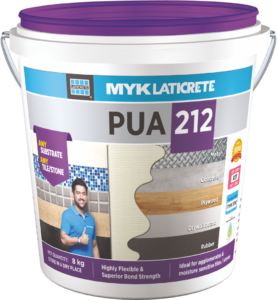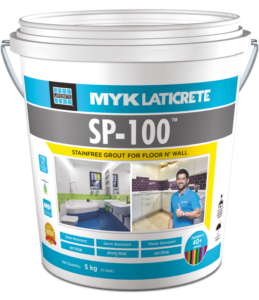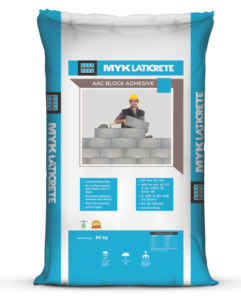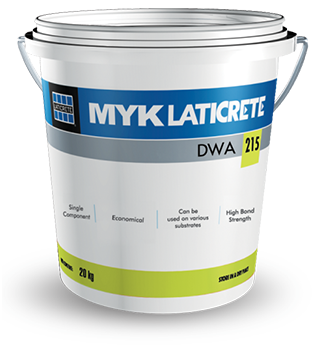
PUA 212® is a two component, modified Polyurethane Adhesive designed for the installation of ceramic tile, vitrified tile, metal tile, glass tile, agglomerates, glass mosaic tile and natural stone on any substrate. It is highly elastic, thixotropic and suitable to lay water sensitive tiles & stones on highly expandable, deformable, absorbent and non-absorbent substrates.
Features & Benefits
- Highly flexible & superior bond strength
- Suitable for all the substrates including metal
- Good for vertical applications
- Ideal for agglomerates & moisture sensitive tiles / stones
Product Details
 Packaging
8 kg pail (Part A: 1.6 kg & Part B: 6.4 kg)
4 kg pail (Part A: 800 g & Part B: 3.2 kg)
Factory proportioned unit consisting of two conveniently packed components – Hardener, Resin (Part A and Part B)
Coverage
15 to 17 sq.ft per pack of 8 kg with 1/4" x 1/4" (6mm x 6mm) square notch trowel for a bed of 3mm.
Coverage will vary depending on trowel notch size, type and size of tile and substrate smoothness and evenness.
Color
Off White
Certification
Packaging
8 kg pail (Part A: 1.6 kg & Part B: 6.4 kg)
4 kg pail (Part A: 800 g & Part B: 3.2 kg)
Factory proportioned unit consisting of two conveniently packed components – Hardener, Resin (Part A and Part B)
Coverage
15 to 17 sq.ft per pack of 8 kg with 1/4" x 1/4" (6mm x 6mm) square notch trowel for a bed of 3mm.
Coverage will vary depending on trowel notch size, type and size of tile and substrate smoothness and evenness.
Color
Off White
Certification
- EN: 12004 / ISO 13007 : R2T
- IS 15477 : 2019 : TYPE 5 T
- VOC: Very Low
How to apply
Surface Preparation:
- All surfaces should be between 40° F(4° C) and 95° F(35° C) and structurally sound, clean and free of all dirt, oil, grease, loose peeling paint, laitance, concrete sealers or curing compounds.
- Substrates must be compact and consistent, free from any rising dampness, with no loose, flaky, or imperfectly anchored parts. The substrate must be stable, without cracks and have already completed the curing period of hygrometric shrinkage. Uneven areas must be corrected with suitable smoothing and finishing products
- Installation shall be made on a dry surface. New concrete slabs must be damp cured and at least 28 days old prior to application. All slabs must be plumb and true to within 1/4” (6mm) in 10ft (3m). Expansion joints shall be provided through the tile work from all construction or expansion joints in the substrate
- Follow ANSI Specification AN-3.8 “Requirements for Expansion Joints” or TCA Detail EJ171-91 “Expansion Joints”. Do not cover expansion joints with mortar. Glass Mesh Mortar Unit: follow TCA installation detail W244
- Tile/Stone, Mesh Backed GMT & Agglomerates: Apply adhesive to the substrate with the flat side of the trowel, pressing firmly to work into surface. Comb on additional adhesive with the notched side. Use the proper sized notched trowel to ensure full bedding of the tile. Spread as much adhesive as can be covered with tile in 10 minutes. Back butter large format tiles (> 12”x12”) to provide full bedding and firm support. Place tiles into wet, sticky adhesive and beat in using a beating block and rubber mallet to imbed tile and adjust level. Check adhesive for complete coverage by periodically removing a tile and inspecting bedding adhesive transfer onto back of tile. If adhesive is skinned over (not sticky), remove and replace with fresh adhesive.
- Glass Mosaic tiles – Paper faced: The MYK LATICRETE PUA 212 adhesive shall be applied to the surface to be tiled with a notched trowel using a scraping motion to work the adhesive into good contact with the surface to be covered. Notch trowel with notches approximately 4mm is recommended to get a bed thickness of 1.5-2mm. V-notch of 3mm also can be used to get bed thickness of 1.5mm. Apply only so much that can be covered with tile within 10-15 minutes or while the adhesive surface is still tacky. The Glass Mosaic tiles shall then be set in place and beaten gently with mallet or grouting float to insure 100% full bedding. Tiles shall be aligned to achieve uniform joints and then allowed to set until firm. Excess adhesive must be cleaned from the surface of the tile with a wet cloth or sponge while the adhesive is fresh and has not hardened. After the tiles are set firm, the face of the sheets of front mounted glass mosaic tiles shall then be dampened and the face mount paper can be removed.
- While installing tile/stone on the external walls and floors, we need to provide the joints by creating spaces between the tiles/stones and filling them up with LATICRETE® cement based grout mixed with L1776 grout admix plus or silicone sealants. In the absence of spacer joints, the surface movements can push tiles/stones away from the substrate causing de-bonding of tiles or stones.
- It is also important to note that the exterior tile / stone installations are provided with joints (spaces) on the periphery of the area without allowing the tile / stone to be bound by the peripheral masonry work or plaster.
- It is also important to note that the tiles/stones are not installed directly on expansion joints. The expansion joints need to be run through the tile / stone work till top surface and filled with materials which accommodate the movements.
- Concrete – VDF, Tremix and MIVON
- Concrete masonry & brick masonry
- Cement mortar beds & plaster
- Metal floors and walls
- Tile and stone
- Wood & plywood*
- Cement backer board*
- Cement terrazzo
- Engineered stones & marbles
- Epoxy or PU resin based substrates
- Gypsum board*
- Existing ceramic tile
- Rubber, PVC and linoleum substrates
- *Consult the backer board manufacturer’s data sheet for the specific recommendations and load bearing capacity of specific board intended for use.



